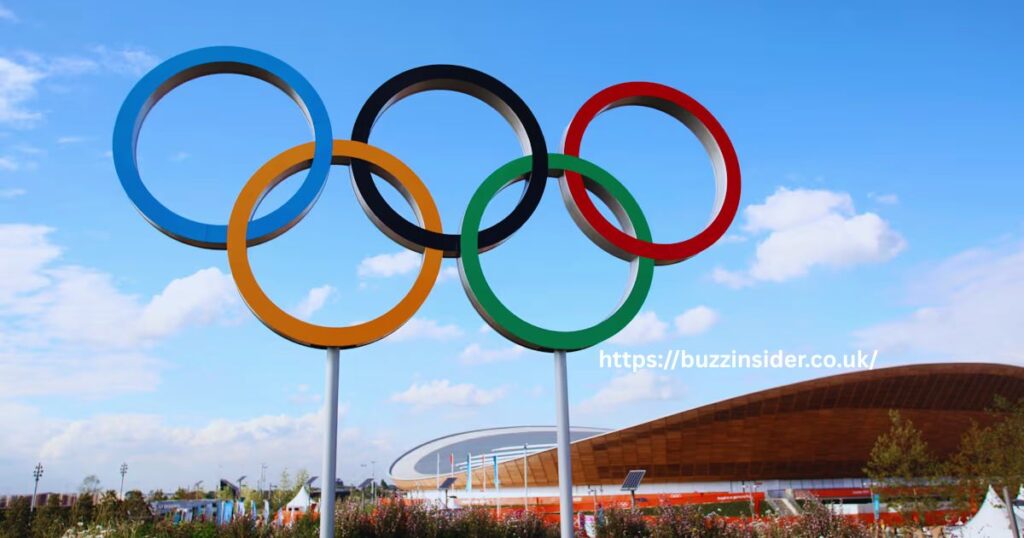The Gymnastics Rings Olympics often referred to as still rings, are one of the most iconic and challenging events in men’s artistic gymnastics. Featured exclusively in the Olympic Games men’s program, the rings demand an exceptional combination of strength, control, precision, and grace. Over the decades, the event has produced legendary performances and symbolized the pinnacle of upper body mastery in the sport.
In this article, we’ll explore the history of gymnastics rings in the Olympics, the technical aspects of the event, training challenges, and the legends who have defined this discipline.
A Brief History of Gymnastics Rings in the Olympics
The rings event has been part of the Gymnastics Rings Olympics program since the first modern Olympics in 1896 in Athens. Men’s artistic gymnastics was one of the core sports, and rings quickly became a test of raw strength and body control.
However, it wasn’t until the mid-20th century that the event began to gain widespread recognition for its difficulty and artistry. With each Olympic cycle, the skill level and complexity increased, driven by advancements in training techniques, apparatus design, and global competition.
Key Milestones
- 1896: Gymnastics, including the rings, debuts at the modern Olympics.
- 1924 Paris Olympics: Standardization of apparatus and scoring begins.
- 1950s-1970s: Rise of Eastern European dominance with gymnasts from the USSR, Romania, and Hungary leading.
- 2000s-Present: A new generation of athletes pushes the limits with more advanced holds and transitions.
Anatomy of the Rings Apparatus
The rings apparatus consists of two wooden or synthetic rings, each with an inner diameter of 18 cm (7.1 inches), suspended from a frame by straps that are about 5.8 meters (19 feet) long. The rings hang freely, meaning any movement by the gymnast causes the rings to swing, making stability and stillness key components of a successful routine.
Unlike other gymnastics apparatuses that involve a stable or predictable surface (like the pommel horse or vault), the rings introduce a dynamic element. The athlete must control every movement, neutralize swing, and maintain complete body tension throughout.
Rules and Scoring in the Gymnastics Rings Olympics Event
The rings routine is evaluated based on the FIG (Fédération Internationale de Gymnastique) Code of Points, which breaks down routines into three primary components:
- Difficulty Score (D-Score): Calculated from the elements performed.
- Execution Score (E-Score): Starts at 10.0 and deductions are made for form, control, and execution faults.
- Final Score: D-Score + E-Score – penalties (if any).
Key Elements in a Routine:
- Strength elements: These include iconic moves such as the Iron Cross, Maltese Cross, Planche, and Inverted Cross.
- Swing elements: Gymnasts perform swings to handstands or dismounts.
- Hold elements: Certain static positions must be held for at least two seconds.
- Dismounts: High-flying somersaults off the rings show control and difficulty.
To succeed, gymnasts must combine all these elements into a fluid, connected routine with minimal pauses or swing.
Physical and Mental Demands of Rings Training
Training for the rings is notoriously difficult. The event requires:
- Exceptional upper body strength: Especially in the shoulders, arms, and core.
- Joint stability and mobility: Essential for injury prevention and performance.
- Grip endurance: To maintain secure holds while managing transitions.
- Mental focus and resilience: Maintaining control under pressure and physical fatigue is essential.
Most gymnasts spend years building the strength foundation required just to perform the basic static holds. Unlike other gymnastics events that focus more on speed and agility, rings training is highly isometric – with many exercises focused on holding positions against gravity.
Iconic Gymnastics Rings Olympics Event
Many Olympic champions have etched their names into gymnastics history through their mastery of the rings. Here are a few legends:
1. Albert Azaryan (USSR)
- Olympic Champion: 1956, 1960
- Known for inventing the Azaryan Cross, a more advanced version of the Iron Cross with a slight twist of the body.
- His strength and elegance set a new standard in the rings event.
2. Yuri Chechi (Italy)
- “The Lord of the Rings”
- Olympic Champion: 1996 Atlanta Games
- Known for unmatched consistency and power, Chechi dominated the event throughout the 1990s.
3. Chen Yibing (China)
- Olympic Champion: 2008 Beijing
- Nicknamed “The King of the Rings” for his nearly flawless routines.
- Known for perfect form, incredible strength, and smooth transitions.
4. Eleftherios Petrounias (Greece)
- Olympic Champion: 2016 Rio
- A modern master of the rings, known for his Iron Cross and smooth dismounts.
- His routines exemplify control, strength, and composure.
The Evolution of Difficulty Pushing Human Limits
As with most Olympic events, the level of difficulty in the rings event has grown dramatically. Where once an Iron Cross might have been the pinnacle of difficulty, modern routines often include:
- Inverted Cross combined with Maltese
- Planche to handstand transitions
- Double-twisting double back somersault dismounts
The increase in difficulty is not just about strength but also technique and training methodology. Gymnasts now use specialized equipment like ring trainers, weighted vests, and resistance bands to fine-tune their performances.
Olympic Rings in the Broader Gymnastics Landscape
While the rings are limited to men’s artistic gymnastics at the Olympic level, they are a core component of strength development across many disciplines, including:
- CrossFit and calisthenics communities
- Military and law enforcement training
- Youth gymnastics and athletic development programs
This crossover has increased interest in the rings beyond just Olympic fans, with many athletes adopting rings training to build strength and mobility.
Looking Ahead Rings at the Paris 2024 and Beyond
As the gymnastics world gears up for the Paris 2024 Olympics, all eyes will be on who will take the mantle from previous champions. Emerging stars from countries like China, Russia, Greece, Japan, and Brazil are pushing the envelope with new variations and training strategies.
Advancements in sports science, recovery, and injury prevention are also allowing gymnasts to train longer and compete at higher levels into their late 20s and early 30s—something unheard of just a few decades ago.
Conclusion
The gymnastics rings represent one of the most pure, demanding, and awe-inspiring events in the Olympic Games. It is where raw power meets artistry, and every motion must be executed with near-perfection. As new generations of gymnasts rise to the occasion, the rings will continue to symbolize the pinnacle of athletic strength, control, and grace. Whether you’re an aspiring gymnast, a fitness enthusiast, or simply a fan of Olympic sport, the rings offer endless inspiration—and a reminder of what the human body is capable of when pushed to its limits.



